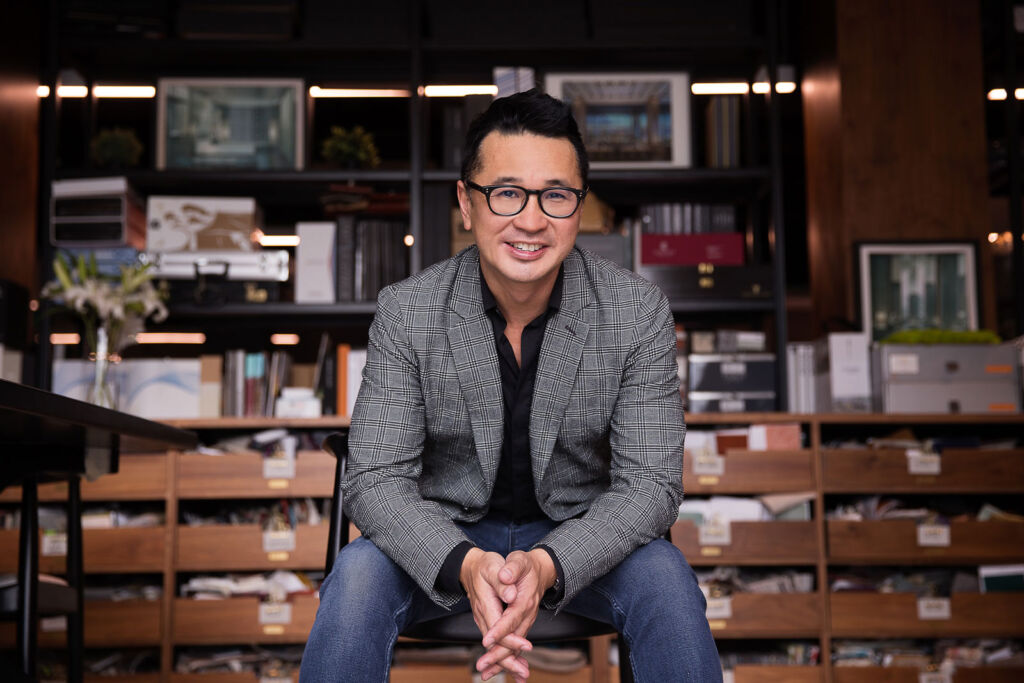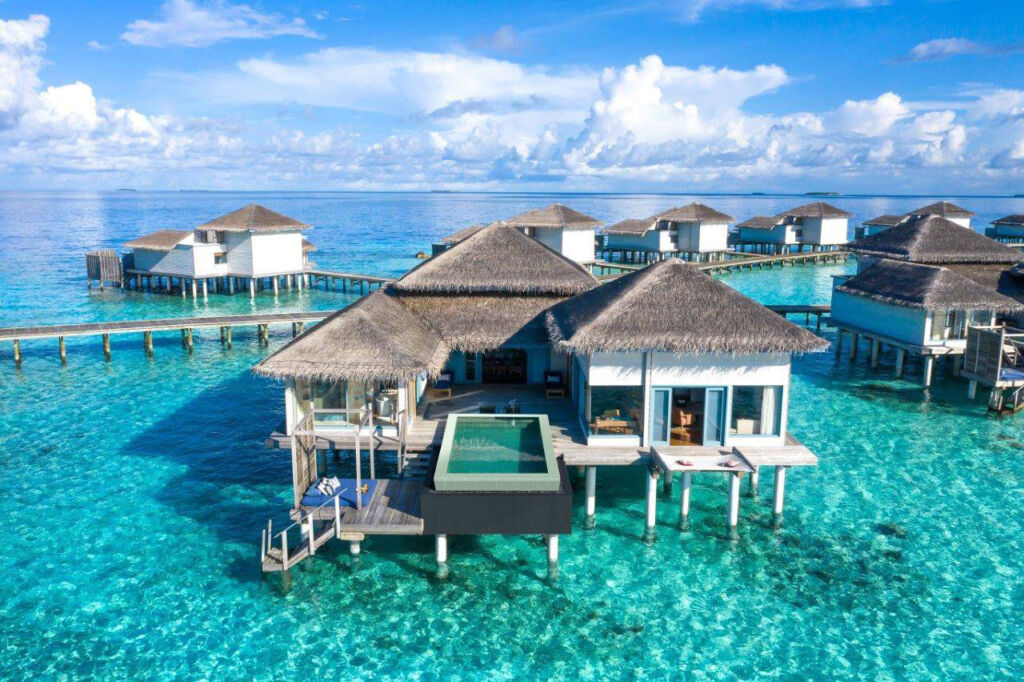

Clint Nagata is the founder and Creative Partner of BLINK Design Group. Ong Chin Huat caught up with him to learn more about his company and the inspiration and thought processes involved in designing 5-star luxury hotels and resorts that fulfil the needs of today’s travellers.
The hospitality industry has what can best be described as having a ‘challenging’ 18-months. As the world begins to adapt to the ‘new norm’, most industry sectors, including the global hotel sector, are finding ways to adapt and move forward. One person who will be an important part of the recovery process is the Creative Partner at the Partner of BLINK Design Group, Clint Nagata.
In this exclusive interview, the Hawaiian-born and now Bangkok-based hospitality design rising star talks to us about what he would like every guest to feel at a hotel or resort he has designed and why biophilia, a hypothetical human tendency to interact or be closely associated with other forms of life in nature is fast becoming a new trend in hospitality design.


Luxurious Magazine: Tell us about the Blink Design Group and what it does.
Clint Nagata: At Blink Design Group, we believe in creating memorable spaces that take every client on a shared journey. As a collective of bold thinkers, we strive to express in all of our works and designs, a refined embodiment of the soul, of both the client’s as well as the place in time.
We are passionate about crafting individual journeys and experiences that revolve around the guests and the place. Inspired by our passion for travel, constant exploration, and enjoyment of the world is what has shaped Blink’s design philosophy and approach for every project.
LM: Why did you relocate to Bangkok from Hawaii?
Clint: I grew up on the North Shore of Hawaii, where houses are few and far between, with fields of sugar cane stalks blowing gently in the tropical island breeze, stretching out as far as the eye could see. Everyday life involved beautiful idyllic weather, so there was a strong connection between the outdoor lanais (which is a deep covered porch typical of Hawaiian houses) and indoor living. This beginning shaped my lifelong vision as an interior designer and my appreciation for interior spaces that blend seamlessly with nature.
I decided to relocate to Asia 15 years ago, inspired by what it had to offer through my travels– a foreign land filled with promise, beautiful scenery, amazing cultures and a blossoming design scene. Moving to Bangkok really opened my eyes as a designer. I found myself on a mission to explore the world in search of inspiration, and my pursuit of creating something stronger than an individual thought soon became the premise of Blink Design Group.
LM: You studied architecture, but why did you choose to specialise in designing hotels and resorts?
Clint: Before graduating from University in Hawaii, I applied to a “creative individuals wanted” advertisement in the newspaper. I got a job at WATG, where I learned about the hospitality design business under the mentorship of Donald Goo. During my time at WATG and the opportunities afforded to me, including frequent trips to Asia, I developed a passion for travel and hospitality design.
LM: What are some of the projects you have designed which you are particularly proud of and why?
Clint: We have some exciting projects that are set to open this year, including The ROKU in Kyoto and Regent Phu Quoc. For ROKU Kyoto (above and below), we want our guests to experience a sense of tranquillity amidst its minimal yet elegant aesthetic, with an intimate warmth that welcomes you back time and again, much like a home.
I just had a virtual walk through our project in Kyoto, and I am excited by the quality level of construction they are able to achieve in Japan. As for Regent Phu Quoc, I believe it will be the first Regent resort to open under the brand’s rebranding, which is certainly exciting.
LM: How does the creation and design process start for you? Does the location and environment where the hotel is situated play a big part in the overall design?
Clint: I believe that it is crucial to continue to tell personal stories through design and to have a never-ending source of curiosity that drives you to explore ideas in our own world and beyond. When I start conceptualising the hotel design, the beauty of the location inspires me and plays an integral part in the design concept.
As designers, our role is to bring out the best in a location but also to think about the brand and the owner. I have a restless desire to break free from the expected and push myself to create something new. I also believe that designs are fuelled by stories envisioned through the eyes of their creator.
LM: Does designing a hotel in the city differ from designing a resort miles away from anywhere? If yes, how is it different?
Clint: For me, inspiration comes everywhere. Through the design work, I have always sought to evolve and create new spaces, with a never-ending quest to leave a legacy of work behind that tells the story of my past.
While we would generally approach the design of a hotel in the city and a destination in a similar way by understanding its context, the guests of both a resort and an urban hotel would be different. In all of our projects, we really spend a lot of time editing and distilling the essence of the place, the vision of the owner, and the DNA of the hotel brand.
LM: What do you like a guest to feel when they stay at a hotel or resort you have designed?
Clint: We genuinely believe that creating memorable spaces is taking every client on a shared journey. The team is also passionate about crafting individual journeys and experiences centred around guests and the place. We also aim to create an intimate scale that feels welcoming and warm, much like a home you would want to keep coming back to. Our constant exploration, passion for travel, and enjoyment of the world inspire our design philosophy and approach for each and every project.
LM: What are the major trends you see in terms of architecture and interior design for hotels and resorts today?
Clint: I have noticed that far more designs embrace the idea of biophilia, not only in hotels and resorts. There have been few positives coming out of the pandemic. One of the few has been that it has made us appreciate nature perhaps more than we have in the past.
LM: Your own projects aside, which hotel or resort in the world is your favourite and why?
Clint: I have always loved staying at one of the Aman properties. The level of design and service is unparalleled anywhere in the world.
LM: You purchased Jaya Interior Design following Jaya Ibrahim’s passing; what are you doing with this business now?
Clint: Preserving Jaya’s legacy has always been personally important to me. His name is even until today still synonymous with understated Asian luxury, particularly in China. Numerous developers have approached us to work on projects with the Jaya style, but we have been selective of which projects we undertake in order to preserve the level of design he was most noted for.
LM: What do you think are the qualities which make a good architect and interior designer?
Clint: As designers, it is essential to continue to tell personal stories through design. Travelling and sharing information is important. Keep pushing boundaries and have open mindsets. As an architect, it is important to reflect on our past and contemplate on the present– overcrowded cities and the energy-guzzling metropolis alike. In our pursuit of building cities of the future, the past can lend clues to the design of tomorrow’s cities.
For further information on Blink Design Group, please visit www.blinkdg.com.
Read more exclusive interviews and profile features here.
